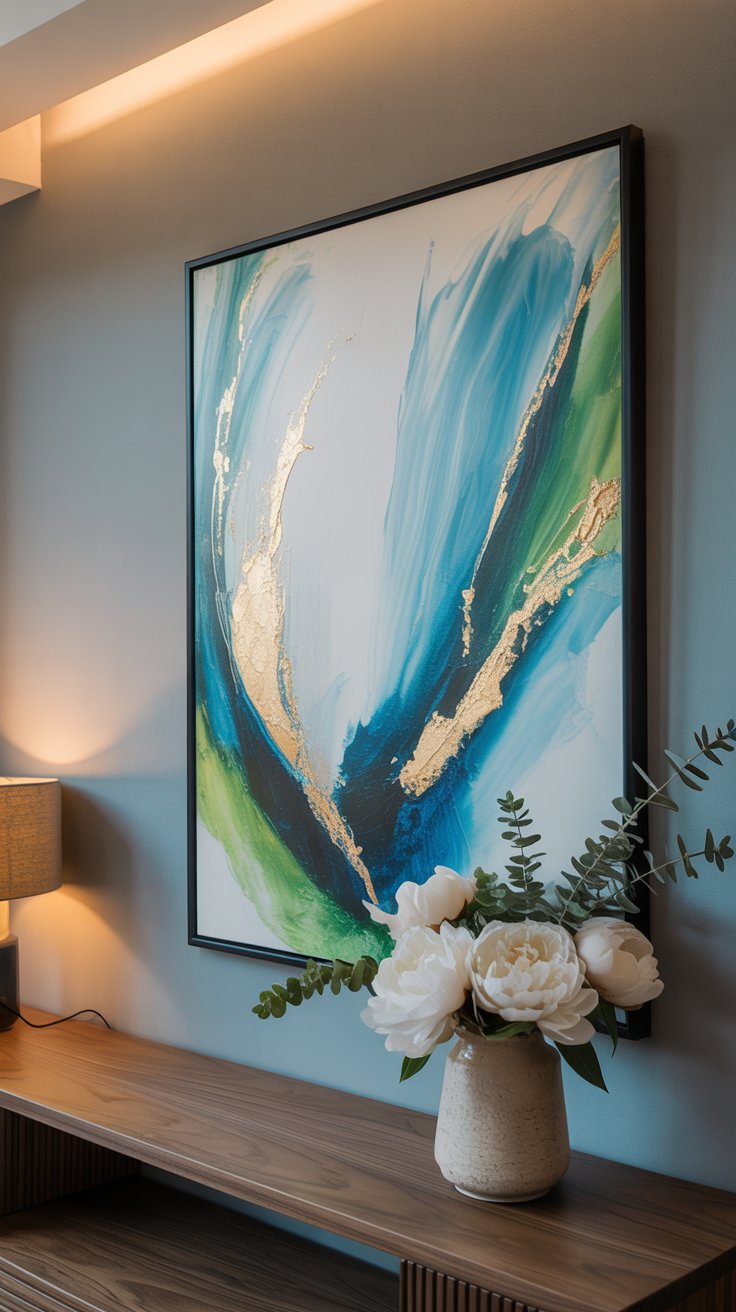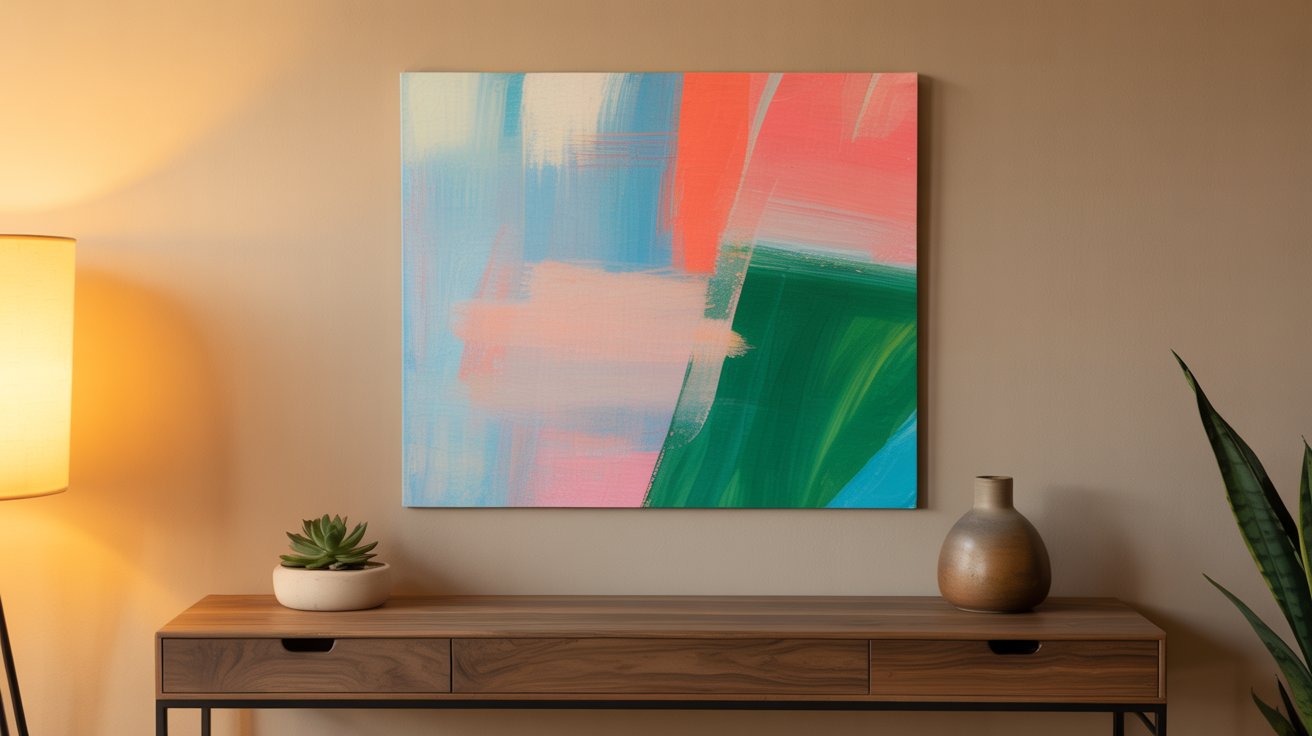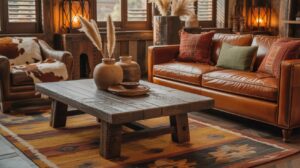This website contains affiliate links. As an Amazon Associate, I earn from qualifying purchases. Some images may be created with the help of ai.
Creating your own wall art mural might seem daunting, but it’s an incredibly rewarding way to personalize your space. Whether you’re longing to add character to a bland room or aiming for a bespoke touch that reflects your style, DIY wall murals offer an expressive outlet. In this guide, I’m sharing foolproof steps and inspiration to turn a blank wall into your canvas. Ready to transform your space? Let’s dive in
1. Choose Your Canvas

Selecting the right wall is crucial for setting the stage for your mural masterpiece.
- Opt for a large, smooth surface devoid of windows or doors for an uninterrupted canvas.
- Lighter walls provide a neutral base, enhancing vibrant colors and intricate designs.
- Consider priming your wall with a neutral base for optimal paint adhesion.
- Shop the Look:
- Dos & Don’ts:
- Do clean your wall thoroughly before starting.
- Don’t skip priming if using bold colors.
- Do consider the natural light when selecting your paints.
- Don’t forget to protect floors with drop cloths.
2. Define Your Style
Bring your vision to life by choosing a mural style that resonates with your personality.
- Geometric patterns or soft landscapes can drastically alter the room’s mood and feel.
- Utilize complementary colors to ensure harmony within your existing décor.
- Explore textures by blending matte and gloss paints for visual depth.
- Shop the Look:
- Dos & Don’ts:
- Do explore online inspiration boards.
- Don’t be afraid to experiment with unusual color combinations.
- Do use tape for clean lines in geometric designs.
- Don’t choose a too-busy pattern for small spaces.
3. Prepare Your Materials
Gathering the right tools ensures a seamless painting process.
- Choose brushes or rollers based on the texture and size of your design.
- Artist-grade acrylic paints provide vibrant colors resistant to fading.
- Stencils can aid in adding intricate details with precision and ease.
- Shop the Look:
- Dos & Don’ts:
- Do invest in quality paint for long-lasting results.
- Don’t forget to test paint on a small wall section.
- Do consider weather conditions for optimal drying.
- Don’t overlook safety gear like gloves and masks.
4. Layering Techniques
Add depth and complexity to your mural using layering techniques.
- Start with a broad background, then build up with layers of detail.
- Use sponges and rags for natural textures or gradients.
- Gradual color transitions elevate the aesthetic.
- Shop the Look:
- Dos & Don’ts:
- Do experiment with test boards.
- Don’t rush; allow each layer to dry completely.
- Do use light layers for subtle textures.
- Don’t exceed three dominant colors for balance.
5. Sketch Your Design
A preliminary sketch helps translate your vision onto the wall with accuracy.
- Use a pencil or light chalk to outline your design, offering the flexibility to adjust before painting.
- Implement a grid system to keep proportions consistent across larger surfaces.
- Remember to step back occasionally to check symmetry and alignment.
- Shop the Look:
- Dos & Don’ts:
- Do explore different angles and perspectives.
- Don’t hesitate to erase and retry sections.
- Do consider a projector for complex designs.
- Don’t start painting without the final approval of your sketch.
6. Utilize Background Textures
Incorporate textures to add depth and interest to your mural’s background.
- Sponging, rag rolling, and stippling offer varied textures to enhance the overall effect.
- Try layering colors through washes for a watercolor-like base.
- Textured backgrounds can complement and contrast with detailed foreground elements.
- Shop the Look:
- Dos & Don’ts:
- Do use sample boards to test texture techniques.
- Don’t overcrowd the background with too many textures.
- Do blend textures smoothly with complementary colors.
- Don’t allow textures to overwhelm your focal design.
7. Detail Work and Finishing Touches
Highlight the intricate details to make your mural pop.
- Use fine brushes or markers for precise lines and tiny details.
- Adding highlights and shadows creates a more realistic and three-dimensional effect.
- Seal your completed mural with a protective top coat to ensure longevity.
- Shop the Look:
- Dos & Don’ts:
- Do allow layers to dry completely before adding details.
- Don’t underestimate the impact of lighting on details.
- Do use a light, steady hand when detailing.
- Don’t forget to finish with a protective layer.
8. Cleanup and Maintenance
Maintaining your mural prolongs its lifespan and vibrancy.
-
-
- Use mild soap and a soft cloth to clean the mural’s surface periodically.
- Avoid harsh chemicals that might erode the paint.
- Touch up any chipped areas promptly to prevent wear from spreading.
- Shop the Look:
- Dos & Don’ts:
- Do perform regular inspections for damage.
- Don’t use abrasive cloths for cleaning.
- Do store touch-up supplies in accessible locations.
- Don’t let small damages go unfixed.
-
9. Draw Inspiration from Nature
Nature is a timeless source of inspiration for mural themes.
- Incorporate elements like leaves, mountains, or water scenes to add tranquility and earthiness.
- Shades of green, blue, and earth tones resonate well in natural-themed murals.
- Use templates for perfect foliage shapes or improvise with freehand for a unique touch.
- Shop the Look:
- Dos & Don’ts:
- Do explore seasons for diverse natural palettes.
- Don’t overcomplicate with too many details.
- Do maintain a balance between colors and themes.
- Don’t use overly bright colors that overpower the natural feel.
10. Incorporate Geometric Designs
Geometric designs bring a modern and structured aesthetic to murals.
- Choose bold contrasting colors for a striking look or soft pastels for a subtle effect.
- Tools such as rulers and tape ensure crisp lines and symmetrical patterns.
- Experiment with overlapping shapes for a layered depth effect.
- Shop the Look:
- Dos & Don’ts:
- Do draft multiple compositions.
- Don’t forget to ensure symmetry.
- Do clean and sharp lines for impact.
- Don’t mix too many patterns that clutter.
11. Integrate Abstract Concepts
Abstract murals allow for limitless creativity and expressiveness.
- Use colors that evoke the desired emotional impact, such as warm tones for energy.
- Abstract designs thrive on irregular shapes and inventive color contrasts.
- Embrace fluid motions and gradients for an ethereal and dynamic look.
- Shop the Look:
- Dos & Don’ts:
- Do focus on color and emotion.
- Don’t confine to traditional shapes.
- Do let intuition guide your art.
- Don’t adhere strictly to symmetry.
12. Reflect Your Personality
Your mural should be a reflection of your unique taste and personality.
- Include motifs and elements that resonate with your hobbies or aspirations.
- Personal items such as photos or quotes can be subtly integrated.
- Customize your mural with a message or signature style.
- Shop the Look:
- Dos & Don’ts:
- Do embed personal stories.
- Don’t copy others’ styles too closely.
- Do express individuality boldly.
- Don’t hesitate to improvise creatively.
13. Bring in Pop Culture
Pop culture motifs can greatly appeal to younger audiences or thematic spaces.
- Use iconic symbols or imagery that hold personal or cultural significance.
- Balance bold colors and patterns with subtle backgrounds to avoid visual overload.
- Incorporate mixed media elements like vinyl or prints for texture.
- Shop the Look:
- Dos & Don’ts:
- Do research current trends.
- Don’t oversaturate with too many elements.
- Do keep proportions consistent.
- Don’t forget to add a personal twist.
14. Kid-Friendly Murals
Murals for children’s rooms should focus on inspiration and imagination.
- Opt for fun, vibrant colors that stimulate creativity and joy.
- Incorporate characters, animals, or fantasy elements to delight and engage.
- Ensure accessibility for future updates as tastes evolve.
- Shop the Look:
- Dos & Don’ts:
- Do involve children in concepts.
- Don’t use themes they’ll quickly outgrow.
- Do focus on learning and fun.
- Don’t ignore easy-to-clean materials.
15. Embrace Minimalism
Minimalist murals capitalize on simplicity and elegance.
-
-
-
- Choose a muted color palette to maintain a tranquil and uncluttered look.
- Focus on a few well-placed elements that make a subtle yet profound statement.
- Minimalistic murals often rely on the power of space and silence.
- Shop the Look:
- Dos & Don’ts:
- Do appreciate negative space.
- Don’t add unnecessary details.
- Do focus on harmony and balance.
- Don’t overwhelm with color variety.
-
-





